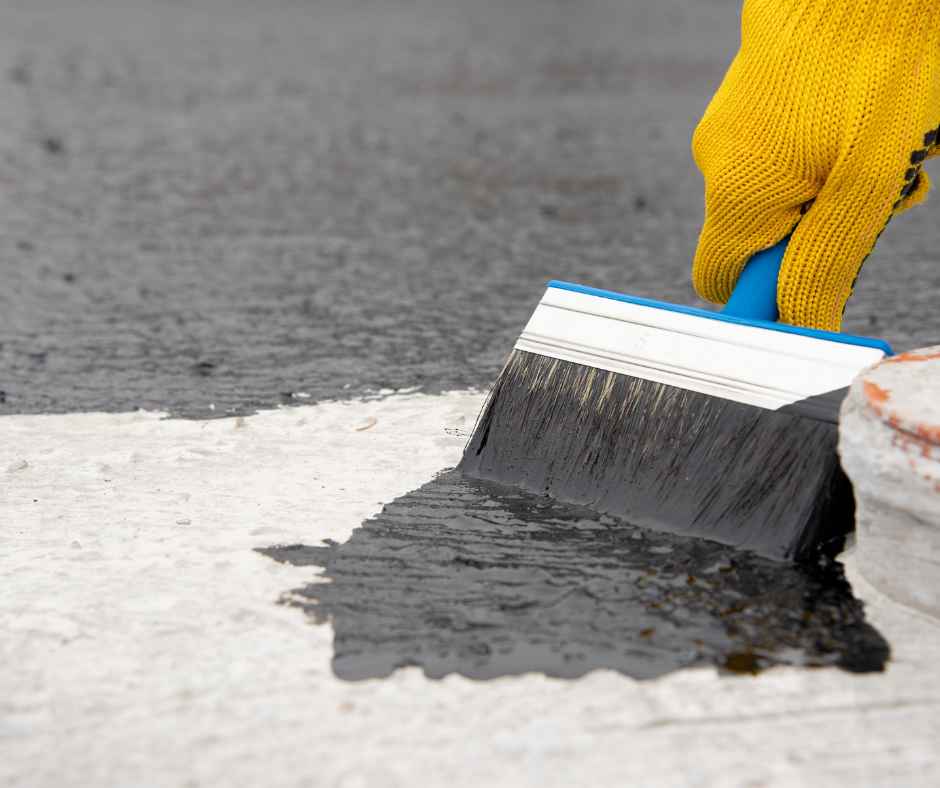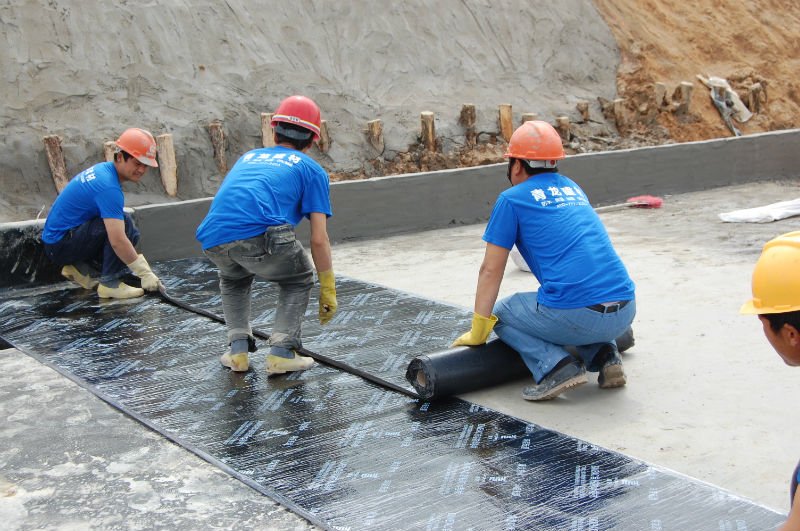Water Solutions That Get Results: Omaha’s Most Effective Systems
Wiki Article
Just How Waterproofing Functions: A Comprehensive Check Out Methods and Technologies
Waterproofing is essential for protecting structures from moisture-related damage. It involves various techniques and technologies that develop obstacles versus water breach. Standard techniques, such as compacted clay, coexist with modern developments like liquid-applied membranes. Understanding the nuances of these approaches is important for efficient application. The performance of any type of waterproofing solution pivots not only on the techniques made use of but also on continuous maintenance and assessment. What are the vital variables that affect long-term performance?Comprehending the Fundamentals of Waterproofing
Waterproofing is an essential procedure that protects frameworks from water invasion, which can bring about significant damage gradually. This method entails the application of different products and methods created to produce an obstacle versus moisture. The primary objective is to stop water from penetrating surface areas, which can cause degeneration, mold development, and architectural instability.Various factors influence the choice of waterproofing technique, including the kind of structure, its area, and ecological conditions. Recognizing the physics of water motion and the residential or commercial properties of various products is essential in selecting an effective waterproofing solution.Effective waterproofing not only safeguards buildings however additionally enhances their durability and stability. Typically, it is incorporated into the style phase of building and construction to guarantee complete protection. As understanding of water-related problems expands, the relevance of recognizing waterproofing principles becomes increasingly clear to architects, home builders, and home owners alike.Traditional Waterproofing Methods
Conventional waterproofing techniques have been utilized for centuries, counting on tried and true methods and materials to protect structures from water damages. Among the earliest methods involves making use of clay, which, when compressed, develops an all-natural obstacle against moisture. Furthermore, bitumen, a sticky, black material stemmed from petroleum, has been employed for its waterproof residential properties, frequently related to roofings and foundations.Another method involves the application of lime-based plasters, which offer a breathable layer that allows dampness to leave while protecting against water ingress. Thatch roof covering, a standard method still seen in some societies, uses exceptional waterproofing because of its tightly loaded straw layers.Moreover, making use of rock and block has projected, as these products are naturally immune to water when appropriately set up. Overall, standard waterproofing methods stress the significance of selecting ideal materials and building and construction methods to boost durability versus water invasion.Modern Waterproofing Technologies
Developments in modern-day waterproofing technologies have actually revolutionized the means frameworks are safeguarded from water damages. Innovative techniques such as liquid-applied membranes and advanced sealers have improved the effectiveness and adaptability of waterproofing solutions. These technologies enable seamless application, decreasing the risk of leakages and making certain comprehensive protection over complicated surfaces.Moreover, the integration of clever technologies, such as moisture sensors and automated surveillance systems, makes it possible for real-time analysis of waterproofing efficiency. This positive technique promotes prompt upkeep and reduces long-term repair work costs.Additionally, innovations in spray-applied coatings offer fast application and outstanding bond, adapting to various substrates while offering robust security. Methods like polymer-modified systems additionally improve versatility and longevity, making them ideal for varied settings. On the whole, modern-day waterproofing modern technologies not only reduce water intrusion however likewise add to the long life and sustainability of frameworks, marking a considerable change in the sector.Products Utilized in Waterproofing
The efficiency of waterproofing solutions greatly counts on the materials made use of in their application. Different materials are used to produce obstacles against water ingress, each with one-of-a-kind residential or commercial properties suited for various atmospheres. Typically used products consist of membrane layers, coverings, and sealants.Liquid-applied membranes, often made from polyurethane or acrylic, create a seamless obstacle that adapts to intricate surface areas. Sheet membranes, commonly built from rubber or polycarbonate, offer resilience and are perfect for bigger areas. In addition, cementitious waterproofing materials, made up of cementitious compounds, supply superb bond and flexibility.Sealants made from silicone or polyurethane are vital for joints and seams, making sure comprehensive defense. Furthermore, innovative materials, such as geo-composite membranes, integrate numerous functions, enhancing efficiency. Overall, the option of waterproofing products is important in attaining lasting and reliable water resistance, customized to specific project demands and ecological problems.
Common Applications of Waterproofing
Waterproofing plays a necessary duty in various industries, making sure the longevity and honesty of structures. Typical applications consist of domestic options that secure homes, industrial facilities that safeguards organizations, and industrial setups that need durable security against wetness. Comprehending these applications highlights the value of waterproofing in preserving both safety and functionality throughout various settings.Residential Waterproofing Solutions
Several home owners encounter difficulties with wetness breach, making reliable household waterproofing options crucial. Various methods exist to resolve this concern, consisting of exterior and interior waterproofing systems. Inside options usually include the application of sealers and coatings to basement wall surfaces, which assist avoid water seepage. Outside techniques generally consist of the setup of water drainage systems and water-proof membranes that draw away water away from the foundation.Additionally, homeowners might consider sump pumps to eliminate water build-up and dehumidifiers to regulate moisture degrees. Correct grading and the usage of rain gutters also play a vital function in taking care of water flow around the home. By applying these strategies, homeowners can considerably minimize the risk of water damages and mold growth, guaranteeing a completely dry and risk-free living atmosphere.
Commercial Framework Protection
Reliable waterproofing options play a crucial duty in the security of commercial facilities. Basement waterproofing Omaha. These strategies are vital for securing buildings, car park structures, and bridges from water damages, which can compromise structural honesty and lead to pricey repairs. Typical applications consist of the installation of membranes, coatings, and sealants that develop obstacles against wetness seepage. Locations such as basements, roofings, and outside wall surfaces are frequently focused on to assure longevity and resilience. Furthermore, waterproofing systems can improve power efficiency by stopping water-related concerns that might lead to mold growth and degeneration. By applying durable waterproofing actions, residential property proprietors can protect their investments and preserve functional performance, you can try these out inevitably adding to the total sustainability of business centersIndustrial Applications Review
While numerous fields deal with unique obstacles, the requirement for dependable waterproofing services continues to be a continuous in industrial applications. Industries such as manufacturing, building and construction, and energy frequently run into atmospheres where moisture direct exposure can endanger architectural integrity and operational performance. In making facilities, waterproofing is essential for safeguarding equipment and materials from water damage. In construction, it safeguards foundations and cellars against groundwater infiltration. The energy field depends on waterproofing for the defense of equipment in hydroelectric plants and offshore structures. Furthermore, food processing sectors utilize waterproofing to ensure health and conformity with safety requirements. Generally, reliable waterproofing solutions are crucial for boosting sturdiness, security, and performance across numerous industrial settings.
Maintenance and Durability of Waterproofing Solutions
Waterproofing solutions are designed to provide long-lasting security against dampness breach, routine maintenance is vital to ensure their effectiveness and longevity. Regular examinations play a significant role in identifying potential issues such as splits, peeling off, or indications of water damage. Addressing these troubles quickly can avoid further deterioration and costly repairs.Additionally, cleaning the surface area of waterproofed locations aids get rid of dirt and debris that can endanger the honesty of the waterproofing barrier. It's additionally suggested residential waterproofing to reapply safety finishes or sealers as suggested by suppliers to keep perfect efficiency. Environmental factors, such as UV direct exposure and severe weather condition conditions, can affect the life-span of waterproofing materials, making normal analysis vitalFrequently Asked Questions
Can Waterproofing Be Applied in Winter?
The question of using waterproofing in cold climate raises problems concerning attachment and treating. Several products might not perform at their finest in reduced temperature levels, necessitating cautious option and consideration of certain standards for efficient application.Exactly How Long Does Waterproofing Commonly Last?
The duration of waterproofing effectiveness varies based on products and ecological factors. Generally, it can last from five to ten years, however normal maintenance and examinations are important to ensure peak efficiency and long life.Is Do It Yourself Waterproofing Effective and Safe?
The effectiveness and safety and security of do it yourself waterproofing depend on various factors, including material high quality and application strategy. While some individuals attain satisfying results, others may run into problems that compromise long-term protection and architectural honesty.What Are the Indicators of Failing Waterproofing?
Indicators of falling short waterproofing include noticeable water discolorations, peeling off paint, mold and mildew development, mildewy odors, and dampness in walls or ceilings - Basement waterproofing Omaha. These indicators recommend jeopardized barriers, demanding timely evaluation and prospective remediation why not try this out to stop more damageJust how Do I Select the Right Waterproofing Service Provider?

Report this wiki page